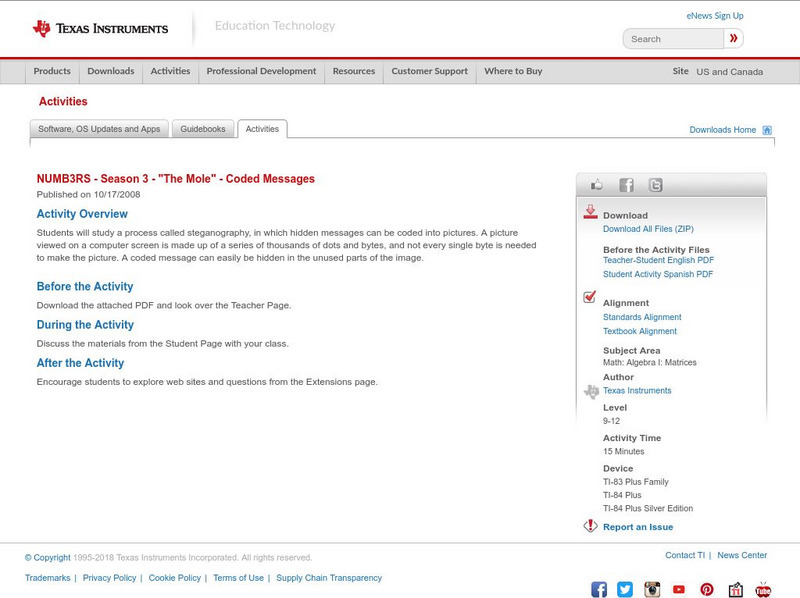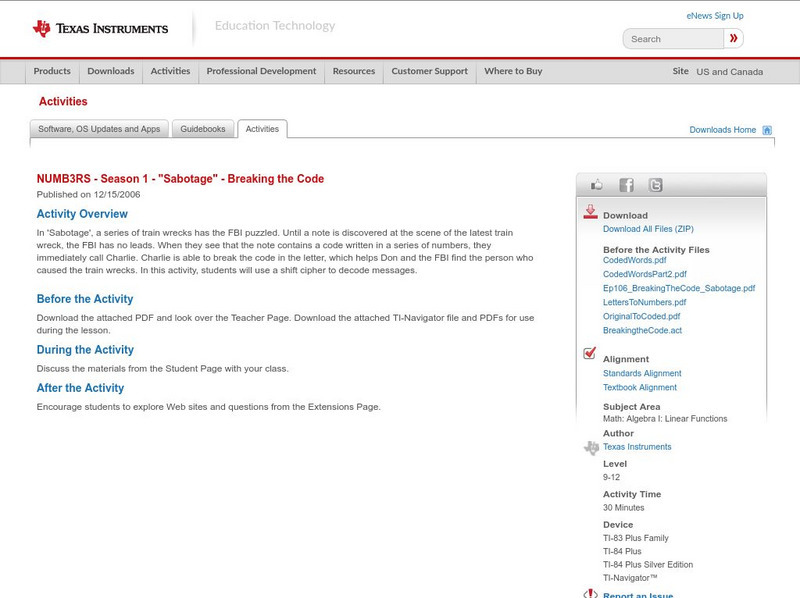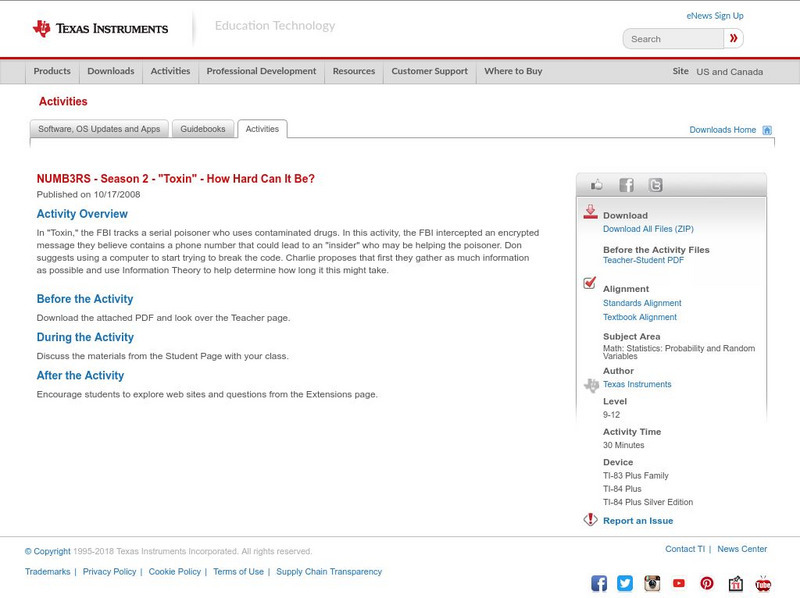Hi, what do you want to do?
Florida Center for Reading Research
Phonics: Encoding and Decoding, Three-In-One
Scholars use the provided pack of alphabet cards to construct basic CVC words, then write down each word they make in one of two columns. Column one is for real words and column two is for nonsense words.
Florida Center for Reading Research
Phonics: Encoding and Decoding, Make-A-Word
Little learners place a picture card on a magnetic board, say the name of the object on the card, then sift through alphabet magnets to find and spell the word they said.
Florida Center for Reading Research
Phonics: Encoding and Decoding, Vowel Stars
Learners are given a star; each star contains a c_c form in the center and vowels on each point. They use the vowels to fill in the blank between the consonants making a simple CVC word. They write each word they make on a piece of...
Florida Center for Reading Research
Phonics: Encoding and Decoding, Letter Cube Blending
Emergent readers use a letter cube to identify, blend, and make words. They roll each of the three-letter cubes, mark down the letters they rolled, then blend the letter sounds together to make a word. They record each word on a...
Florida Center for Reading Research
Phonics: Encoding and Decoding, Digraph Delight
There are three spinners to use in this phonic activity. Spinner one contains digraphs, spinner two contains vowels, and spinner three contains consonants. Learners spin each spinner, write down the letters they get, blend them to make a...
Florida Center for Reading Research
Phonics: Encoding and Decoding, A Digraph A Word
Learners view a series of images, then choose digraphs, consonants, and vowels to spell out the object's name on each card.
Discovery Education
Satellite Telemetry
Satellites require rockets to launch, but it doesn't take a rocket scientist to understand them. Future engineers learn about how satellites send data to Earth and how to interpret satellite images. They see how radio waves play a role...
Exploratorium
Secret Codon - Write a Message in DNA
String up a message. Pupils string together colored beads to code a word or short phrase. Each color represents one of the four DNA bases. Using a combination of three bases, learners create an amino acid that stand for each letter of...
Beauty and Joy of Computing
Combining List Operations
Use list operations to modify an earlier version of Tic Tac Toe. The fourth lab in a series of five has pupils combine list operations to build more powerful operations. They take a project from a previous unit and enhance it to keep...
Computer Science Unplugged
Codes in a Song—Modems
Let's listen to some codes. To understand how a modem sends binary numbers over a phone line, class member listen to the codes included in the provided mp3 files, translates the tones to binary numbers and then convert the...
DiscoverE
First You See It, Then You Hear It
Light and sound go hand in hand. Pupils set up a system that will emit sound when a laser is directed at a photodiode. Various objects, such as a comb and talcum powder, allow for modulation of the laser beam. Individuals also...
Howard Hughes Medical Institute
HIV Protease Inhibitors
How do doctors fight a virus that's constantly mutating? Show science scholars how we fight HIV using one of its own most fundamental processes through a thoughtful demonstration. The lesson focuses on how protease inhibitors prevent HIV...
Discovery Education
Blueprint for Life
DNA is the code for all biological traits, both plant and animal. Using an exploratory lesson, learners begin to explore the concept of a biological code by decoding word puzzles. They then extract DNA from plant cells using detergent to...
Illustrative Mathematics
Adding Tenths and Hundredths
Learning to add fractions with different denominators presents a big hurdle for many young mathematicians. Simplify the process for learners with this series of practice problems involving the friendly fractions tenths and hundredths....
TeachEngineering
Teach Engineering: Rotary Encoders & Human Computer Interaction
Students learn about rotary encoders and discover how they operate through hands-on experimentation. Rotary encoders are applied in tools to determine angle measurements and for translations of angular motion. One common rotary encoder...
TeachEngineering
Teach Engineering: Ding! Going Up? Elevators and Engineering
Students create model elevator carriages and calibrate them, similar to the work of design and quality control engineers. Students use measurements from rotary encoders to recreate the task of calibrating elevators for a high-rise...
TeachEngineering
Teach Engineering: Smart Move!
This is a simple activity to visualize a communication system. In order to do this the students encode, decode, transmit, receive, and store messages. They will use a code sheet and flashlight for this process. They will also maintain a...
Texas Instruments
Texas Instruments: Numb3 Rs: Coded Messages
Based off of the hit television show NUMB3RS, this lesson uses matrices (inverse and multiplication) to decode messages hidden within digital pictures -- a process known as steganography. This method of hidden communication is known to...
Texas Instruments
Texas Instruments: Numb3 Rs: Breaking the Code
Based off of the hit television show NUMB3RS, this lesson introduced students to simple coding techniques (namely, the shift cipher). Students learn to translate codes from nonsense to English by quantifying each letter, and then...
Braingle
Braingle: Cryptography Brain Teasers
Test your critical thinking skills with a variety of cryptography brain teasers, phrases or expressions "encoded in some way." Solve the teasers provided at this site, and submit your own for others to try!
Texas Instruments
Texas Instruments: Numb3 Rs: How Hard Can It Be?
Based off of the hit television show NUMB3RS, this lesson introduces students to one way of defining the strength of an encryption (called "Entropy"). In the lesson, students learn how to calculate the entropy of a given code, and then...
Texas Instruments
Texas Instruments: Numb3 Rs: Creating Codes
Based off of the hit show NUMB3RS, this lesson focuses on getting students to create ciphering codes. These codes are made in two different ways in this lesson: once with addition and once with multiplication. Students in this lesson are...
Other
Nat'l Security Agency: National Cryptologic Museum
On this site one can find the National Security Agency's history of cryptology, some online exhibits, and sections on mathematics, education, and more.
Other popular searches
- Encoding Activities
- Encoding With Matrices
- Encoding Animal Words
- Encoding Memory
- Phonics and Encoding
- Encoding Words
- Encoding Memory Psychology
- Decoding and Encoding
- Encoding in Communication
- Phonics and Word Encoding
- Encoding Lesson Plans
- Encoding and Decoding Skills



























